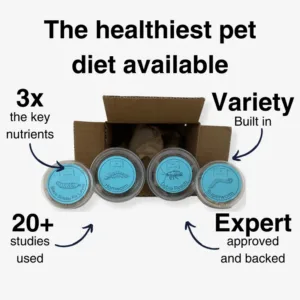Reptile Subscription Box.
Feeding Time Just Became Fun and Easy.
With our subscription, you’ll receive a weekly package containing a variety of feeder insects. Feeding time is more fun, healthier, and easier.
Why You'll Want To Join:
- Our custom curated subscription boxes provide top of the line nutrition
- Your pet can say they have their own diet expert
- You'll deliver premium care and save time
How it works
Getting started is easy
1. Take Quiz
Take a 3 minute quiz to provide us with some details on your pet. We’ll do the rest.
2. We Build Your Plan
Using information you provide, our team establishes the right feeder insects for your pet to optimize health and nutrition.
3. Weekly Deliveries
We deliver weekly food bundles containing a wide variety of feeder insects to meet your pets unique nutritional needs.
Get Started
 Rated 5.00 out of 5 based on 3 customer ratingsStock
Rated 5.00 out of 5 based on 3 customer ratingsStock
Out11.99 per week* billed biweeklySelect options
What Other Owners Say



Perks of our plans
Next Level Connivence
No more individual orders, or pet store trips. You'll get insects delivered to your doorstep weekly.
Variety Made Simple
Your subscription will contain unmatched variety your pet will absolutely love.
Cost Savings
We aren't the cheapest per-insect supplier around, but with our service you'll save on shipping and lose less feeders before you can use them!
FAQs
Your insect deliveries will contain a custom curated quantity of 4+ insect species. We design your subscription around your pet’s species and age to give them the perfect nutritional make-up they need to be healthy.
You’ll receive a delivery once a week. This way, the insects you get are always fresh, and you’ll never have to worry about caring for them. We ship all insects with food to keep them healthy until your pet is ready for them.
Shipping is on us. No ridiculous extra shipping fees like the other guys.
Never. Cancel any time.
Currently, we offer subscriptions for Bearded Dragons, Crested Geckos, and Leopard Geckos. We are always looking to support new reptile owners, so check back often or send us a message if yours isn’t supported yet.
The satisfaction of reptile owners and their pets is our number one priority. If you have any issues with your shipment at all, simply contact support@herpcare.org and we will try out hardest to make things right. That’s the HerpCare Guarantee.
